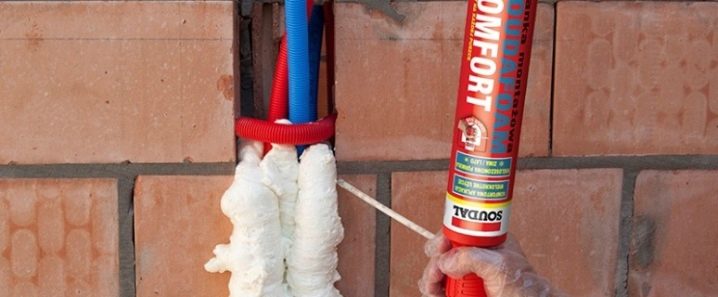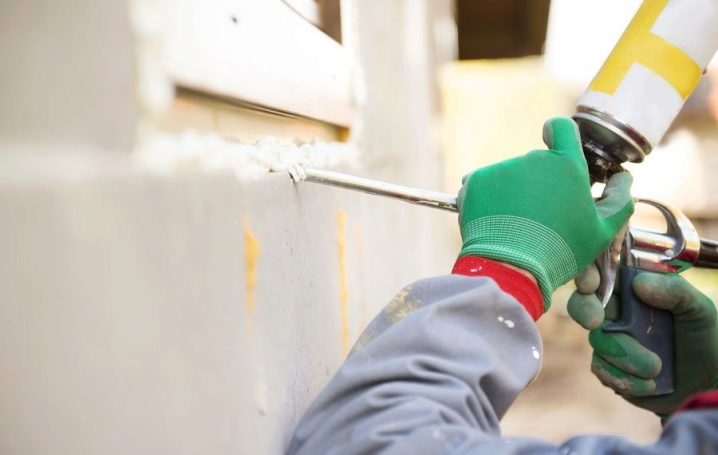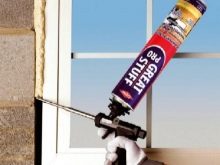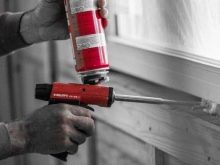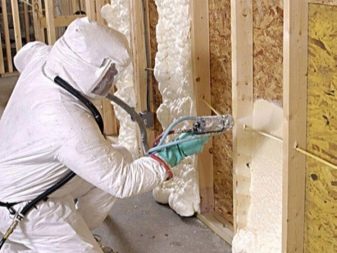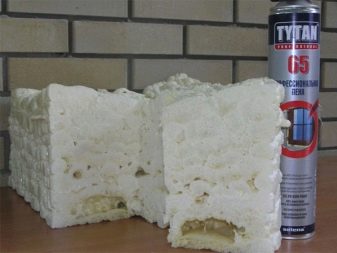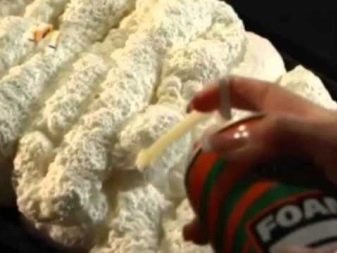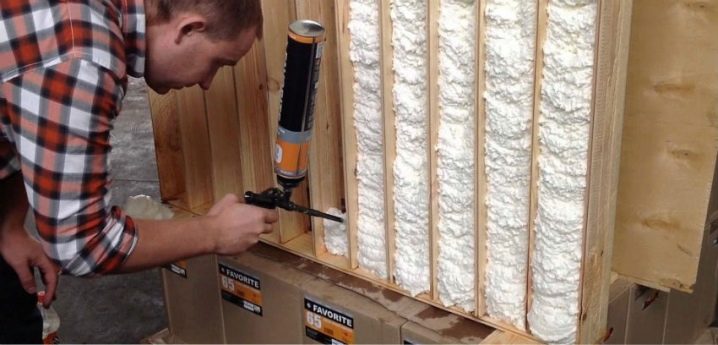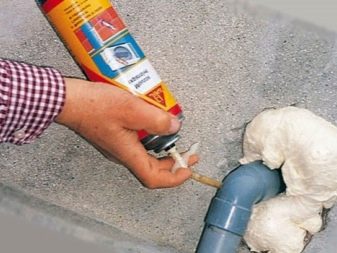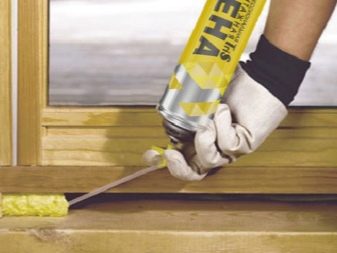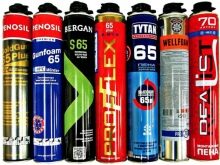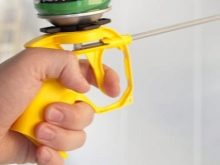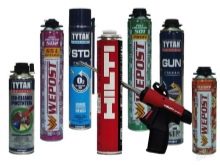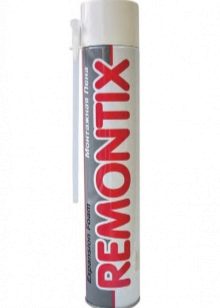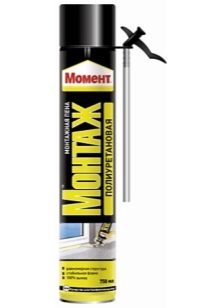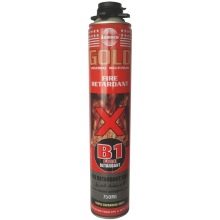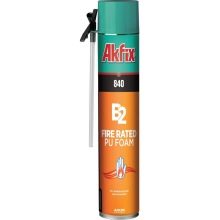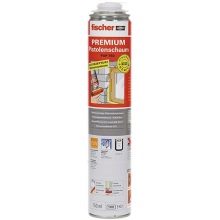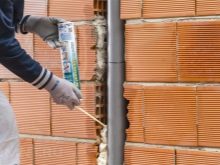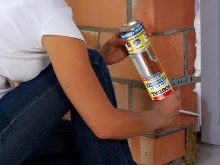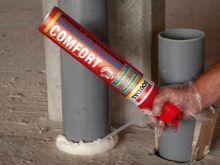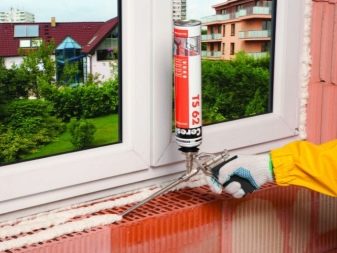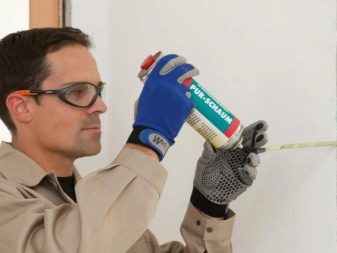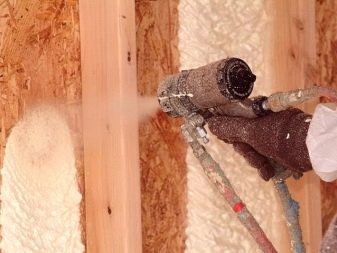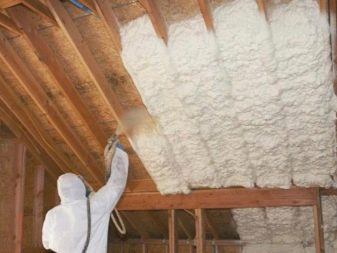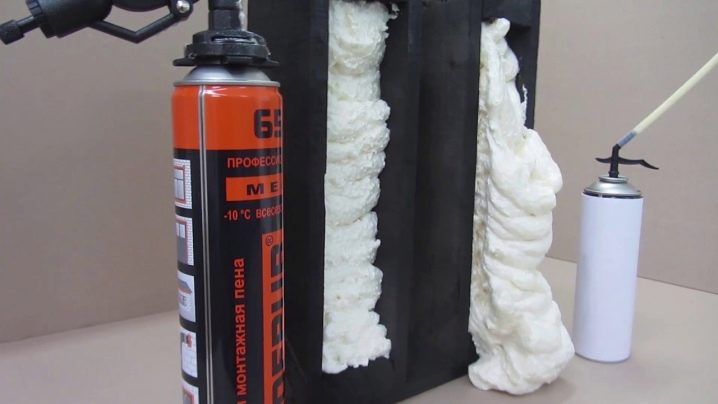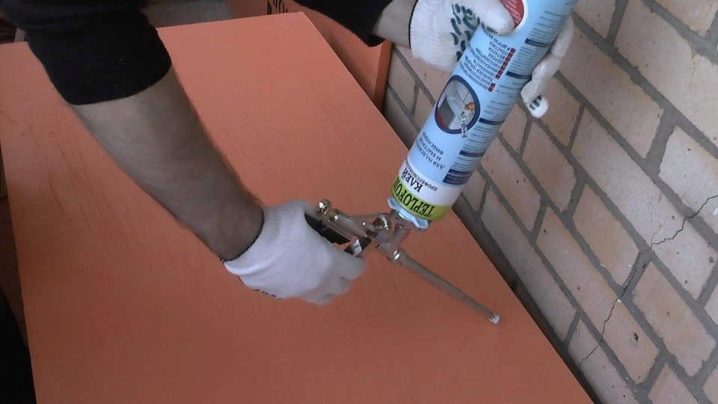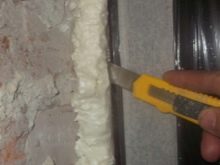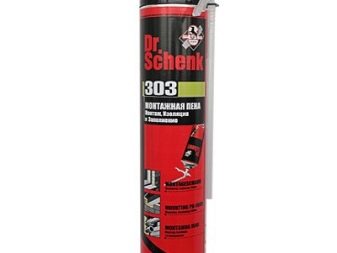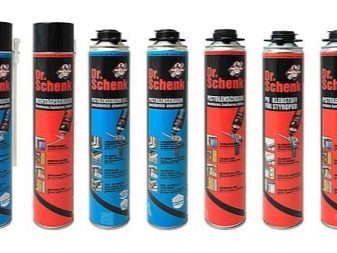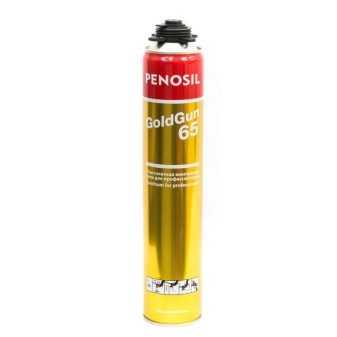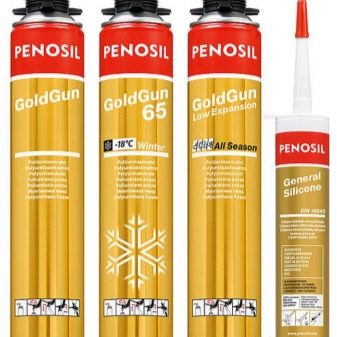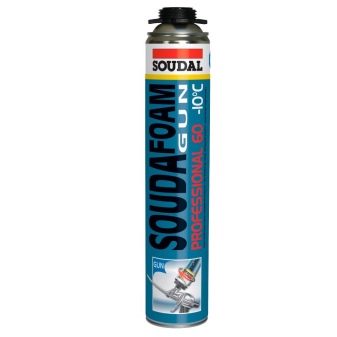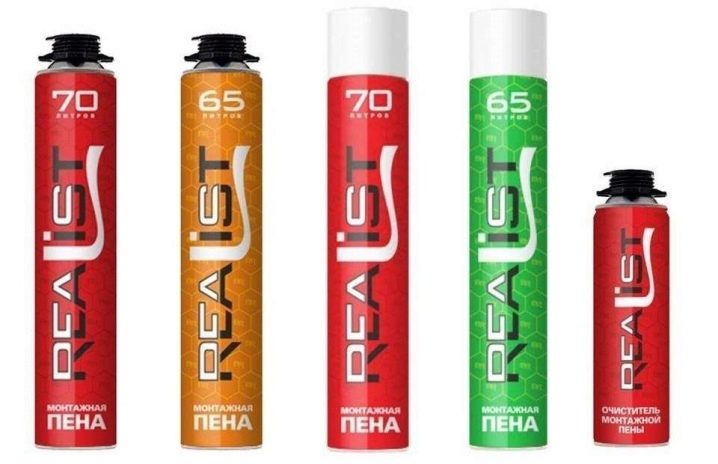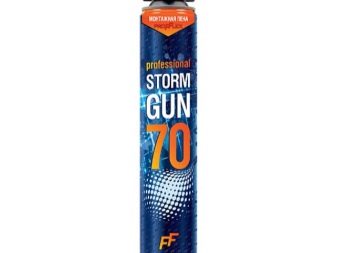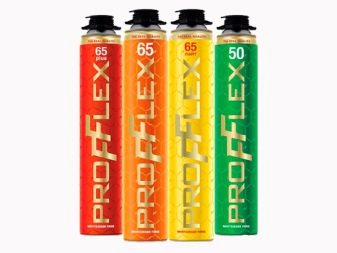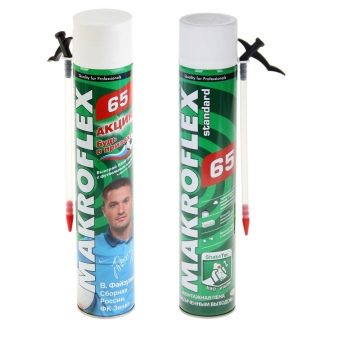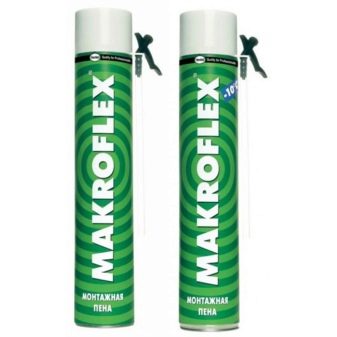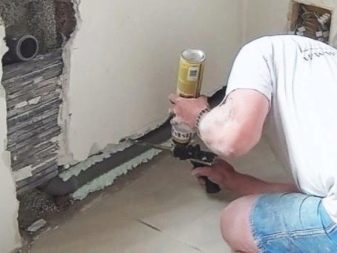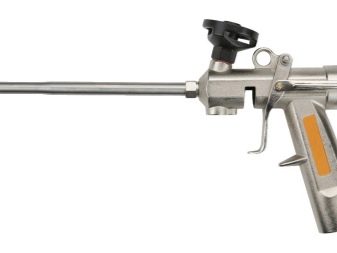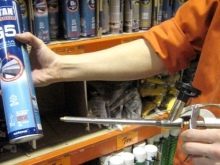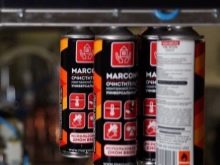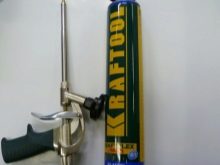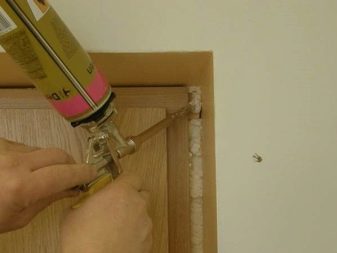Polyurethane foam: types and properties
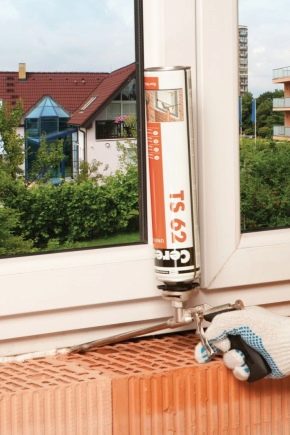
Among various multifunctional building materials, polyurethane foam has been popular for a long time. This composition is used in various areas of repair, but not everyone knows what types this product has and how to use foam correctly in the repair process. In order not to be mistaken in choosing a product, you should carefully read a number of recommendations for its use.
Special features
Polyurethane foam is a substance that is a fluoropolymer sealant having a special consistency that changes during the process of direct operation.Also among the components of the mixture can be found polyol and isocyanate. Products are manufactured in special cartridges, the contents of which are under pressure. To create a foamy substance due to high pressure, a propellant is used.
The peculiarity of this sealant is the change of the state of aggregation in certain conditions. This process occurs due to the contact of the foamy structure with moisture in the air and on the treated surface. Due to this contact, the mounting foam freezes, polymerization occurs in its composition.
Specifications
This sealant has a number of special characteristics that distinguish it from other compounds used in the construction and repair process. During the operation of the foam takes into account the volume of the substance, which is measured in liters. This indicator is determined by the consistency of the foam (foaming), as well as the amount of substance that came out of the cylinder.
The adhesion index characterizes the strength of adhesion with the substrate. Various surfaces can act as a substrate, the most common are brick, concrete, plastic, wood.Adhesion performance with these materials is very high, but with such substrates as oil surfaces, silicone, ice and synthetic materials, adhesion is practically absent.
Foaming is characterized by the process of boiling up the substance in the balloon. It is due to the difference between atmospheric pressure and pressure inside the cylinder. When a substance leaves the package, bubbles form. Due to the presence of silicone particles in the composition, the foamed mass retains a certain shape. The lack of silicones can lead to a violation of the consistency of the composition during foaming.
The existence of porovskry components allows bubbles to burst, while the contents of the bubbles does not leave the foam clot. Only excess propellant is removed in a natural way. There must always be a balance between the number of closed and open bubbles; its absence can drastically change the structure and properties of the composition.
Expansion is a chemical process that occurs after foaming. It is a prepolymer reaction to the environment.As a rule, the foam substance is in contact with moisture, during which carbon dioxide is released and polyurethane compounds are created. It is at this stage that the substance expands, filling the necessary areas. It is believed that foam manufacturers should carefully control this process to avoid excessive expansion, but many people think that this property can significantly save material during the repair process.
Secondary expansion is a process that occurs after the polymerization of a substance. Most often, this process is precisely negative, since it affects the usability of the composition. Re-expansion can occur most often due to the influence of external factors, for example, an increase in temperature. But an important indicator is the origin of the gases that the manufacturer adds to the foam. Quality products, as a rule, are not subject to either spontaneous expansion or shrinkage.
Some builders have noticed that the likelihood of secondary expansion increases for products that are manufactured in cylinders with a tube.
An important indicator of quality is the viscosity of a substance. It significantly determines the consistency of the composition and the degree of influence of temperature factors on it. With a sharp temperature differential viscosity is often broken.
Polyurethane foam has special thermal insulation properties. Its thermal conductivity is not much different from the characteristics of the foam. Foaming tool is perfect for insulation, but usually it is used in a small area or on a certain kind of seams, because it will be quite expensive to warm the foam with large spaces.
Depending on the type of composition, the foam may have a different density. It is selected in accordance with the type of work planned, because for different procedures this indicator varies.
The characteristic color of foaming sealant is light yellow. If you improperly prepare the surface, the color may change under the influence of sunlight and become orange. This process significantly affects the life of the material. To extend it, process the material with a putty or plaster.
Shelf life of products depends on the manufacturer.But on average, it varies from a year to a year and a half. After this period, it is not recommended to use a sealant, because due to the change in properties it may give surprises during operation.
Kinds
When buying construction foam, it is very important to choose exactly the composition that you need, because sometimes it is easy to confuse product types. Therefore, it is necessary to understand in advance the classifications of types of assembly foam according to certain criteria.
The first sign characterizing the sealant is the number of components in the composition.
- Single component formulations. These include exactly the products that are sold in cylinders ready for use. This foam has the standard characteristics presented above. The second name of disposable formulations in aerosols is household foam. This product is characterized by a lower filling density of cylinders in comparison with professional compositions.
- Two component foam includes more complex components that need to be further prepared before installation work. This foam is designed for special construction pistol.
Two-component products are capable of hardening much faster than single-component analogues, and they are also characterized by a higher level of polymerization.
But since for people who do not have much construction experience, it will be difficult and expensive to use such compounds, they are in demand mainly among experienced craftsmen. Such professional foam is not disposable.
Another sign of classification foam is its resistance to different temperatures.
There are several varieties.
- Summer It is used at positive temperatures - from 5 to 35 degrees Celsius.
- Winter It is used in cold weather conditions - at temperatures up to -20 degrees Celsius. This variety has a weaker extension, which is its negative quality. Also, in order to ensure better adhesion of the composition to the surface, sometimes it is necessary to wet it with a spray bottle. To foam function normally, you need to monitor the temperature of the cylinder, which should not fall below 20 degrees even in the cold season.
- All-season products it is used in a wide range of temperatures - from 10 degrees of frost to 30 degrees of heat.
It is often necessary to use foam sealant in extreme conditions where there is a risk of fire.
According to the degree of resistance to fire, there are also several types of compositions:
- B1 - this class indicates that the composition is highly resistant to open fire.
- B2 is an indicator that the material is capable of independent attenuation.
- B3 characterizes a foam that is not heat resistant. This group may include such a type of sealant as waterproof foam. But it does not collapse under the abundant exposure to moisture and is ideal for use in bathrooms and swimming pools.
As can be seen from the classifications provided, mounting foam is a unique building material that can be used in almost any weather and temperature conditions.
Scope of application
Construction foam performs a number of important functions:
- sealing;
- soundproof;
- mounting (connecting);
- heat insulating.
Each of these functions is implemented in a specific area of use.
The main areas of application of building foam sealant are the following:
- Warming of premises of an economic nature.Polyurethane foam is often used for sealing gaps in the insulation of garage doors or storage rooms.
- Fixing doors, wall panels, windows.
- Due to the fact that this material is characterized by additional waterproofing and soundproofing of the room, it is often used to fill various gaps during the overhaul in residential areas.
- The material is often also used as anchoring the arches in the interior.
Consumption
It is very important for both professionals and inexperienced builders is such an indicator as the consumption of mounting sealant. This criterion directly affects the amount of material needed for the repair work, so it is important not to be mistaken when calculating the flow.
There are a number of factors affecting the amount of foam spent.
- Air temperature during operation of the composition. It can contribute to additional expansion and material savings.
- It is important to consider the material of the surface on which the foam is applied. Not always the level of adhesion of the sealant and various raw materials is the same. Some surface absorbs moisture better, and some repels water.All this affects the quality of the functioning of the foam composition and its consumption.
- Features of the production of sealant. The manufacturer in most cases produces construction foam with a certain indicator of primary expansion. He is obliged to indicate this data on the package in order to make it more convenient for the buyer to calculate the quantity of the necessary material. For honest manufacturers, consumption figures always coincide with reality.
The standard yield of the solution is 50 liters, which is directly proportional to the filling of the seam, not exceeding two centimeters in width, and 5 cm in depth. An important indicator of consumption is the area that must be treated with a sealant. If it does not exceed 3 square meters, then the consumption can be more than 7 m3, which is equivalent to 123 cylinders. But if the surface is more than 3 m2, then the consumption decreases.
Pay attention when calculating such factors as the volume of 1 cylinder. The standard is a volume of 750 ml. But there may be other sizes.
Mode of application
The key step is the use of foam. It is necessary to familiarize yourself with the instructions for use of the composition.
Its application includes several stages.
- If you do not want to spend a lot of time washing your hands after completing the work, wear rubber gloves. They will protect you from the inevitable impurities of the skin.
- The cylinder must be removed from the cylinder and, depending on the type of device, a special tube must be attached to the valve or a gun must be screwed on.
- To the consistency of the substance in the balloon became homogeneous, it is recommended to shake the composition thoroughly. Shake should be at least 60 seconds.
- The surface where the sealant will be applied should be treated with water.
- The cylinder should be kept so that it is located bottom up, because this is the best foam supply.
- Moving from top to bottom, fill the slots by 1/3. The remaining space will be filled during the expansion process.
- When the foam fills all empty areas, it is recommended to sprinkle it with water. This will speed up the process of final freezing.
Drying time
The time it takes for a foam to acquire a hard and dry texture is different and depends on several factors:
- The manufacturer creates foam of different quality. You can purchase products that dry in a different amount of time.
- In order not to translate the product, remember that there are different types of drying, and each of them requires a certain amount of time. The surface layer hardens after about 20 minutes. You can use the tool to remove excess foam only after 4 hours, and the final solidification will occur no earlier than in a day.
- To speed up the drying time with water, not only the base is sprayed, but also the applied composition itself.
Manufacturers
There are a number of firms producing assembly foam, which occupy a leading position in the global ranking of manufacturers.
German company Dr. Schenk known throughout Europe and has many branches in various countries, including Russia. The company carries out the production of compounds for both internal and external works. All products combine an acceptable level of quality and affordable prices.
Estonian company Penosil makes assembly foam with quite wide range of application. Such products are often used not only in the construction and repair of housing, but also in various industrial facilities. Possessing a high density and a small level of expansion, the compositions will be an excellent option for working with door surfaces.
A high quality construction foam is produced by a Belgian company. Soudal. A distinctive feature of this company is the constant desire to improve their products. All new and new technologies which allow to make sealant in the most convenient in use are regularly applied. The product range is also amazing.
Brands from Russia are not inferior to foreign companies. Company Realist produces both professional and semi-professional compositions that can be used in various types of work and temperature conditions.
Firm Proflex famous for the manufacture of foam sealants only. Among them there is a special line of goods for external works. Many professionals in the field of construction and repair note that the products of this company are almost identical to the quality of the leading European brands.
Exceptional quality is the composition of the company. Makroflex. It is noted that after drying the foam does not collapse, does not crumble and does not lose its original appearance for a long time.
Whichever company you choose, be sure to read consumer reviews before purchasing foam.An important factor in choosing will be consultation with professionals.
Tips
In the operating instructions of the assembly foam, not all the nuances of working with such material are taken into account.
Significant benefits when working with sealant and its choice will bring the recommendations of professional builders:
- The rate of hardening of the composition is significantly influenced by the level of humidity in the room. If the microclimate in the room is dry, then the solidification will take longer.
- If you fill small joints or gaps, then be sure to buy weakly expanding foam, which saves you from having to scrape off the excess material and help fill the seams most carefully.
- A construction pistol in good condition can store a foam composition inside itself for no more than 3 days.
When buying construction foam, be sure to take the bottle in hand. Good products usually have a tangible weight, and when shaken, one feels how the composition moves from one end of the package to the other.
- Pay attention to the appearance of the container. If there are traces of deformation, it may mean that the composition is stored in inappropriate conditions.
- Choosing a gun for mounting sealant it is better to dwell on metal models that have a collapsible design. Such options are convenient to use and at the same time are relatively inexpensive - about 500 rubles. For many, the highest priority is such a device material as stainless steel. Pay attention to the presence of a regulator that determines the degree of supply of foam solution.
- If you have a large front of work with building foam, it is recommended to purchase a special cleaner for such material. The composition of the cleaner includes the following components: acetone, dimethyl ether and methyl ethyl ketone. All these components are enclosed in a special aerosol can, which is also available in the form of nozzles on the gun.
- If you decide to fill the gap with foam, then make sure that their thickness does not exceed 5 centimeters. Otherwise, you may get too much material consumption or an unpredictable change in composition, for example, excessive expansion.
- If the foamy composition gets on the skin or clothing, it is recommended to immediately wash off the impurities, otherwise it will be much more difficult to do as the material dries.
- Despite the fact that the assembly sealant does not allow water to pass through, but keeps it inside its texture when absorbed, many experts recommend using foam only for interior decoration. Before you decide on the exterior, analyze the features of the climate.
With all the features, recommendations for application and options for using a material such as construction foam, you can apply this substance yourself in various fields and make the environment much more comfortable.
On the wall insulation with foam, see the following video.
